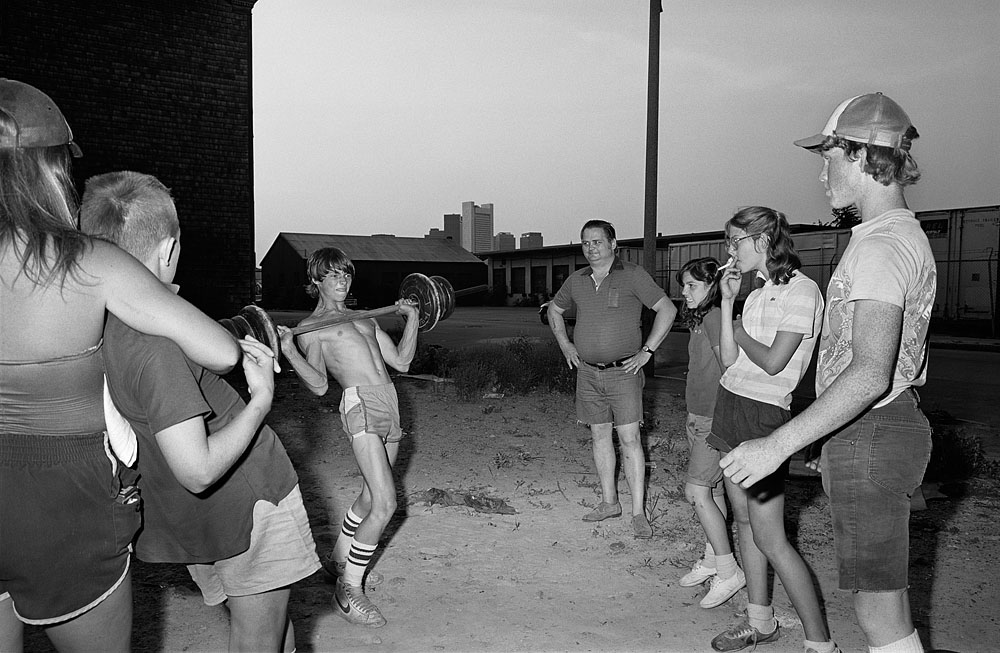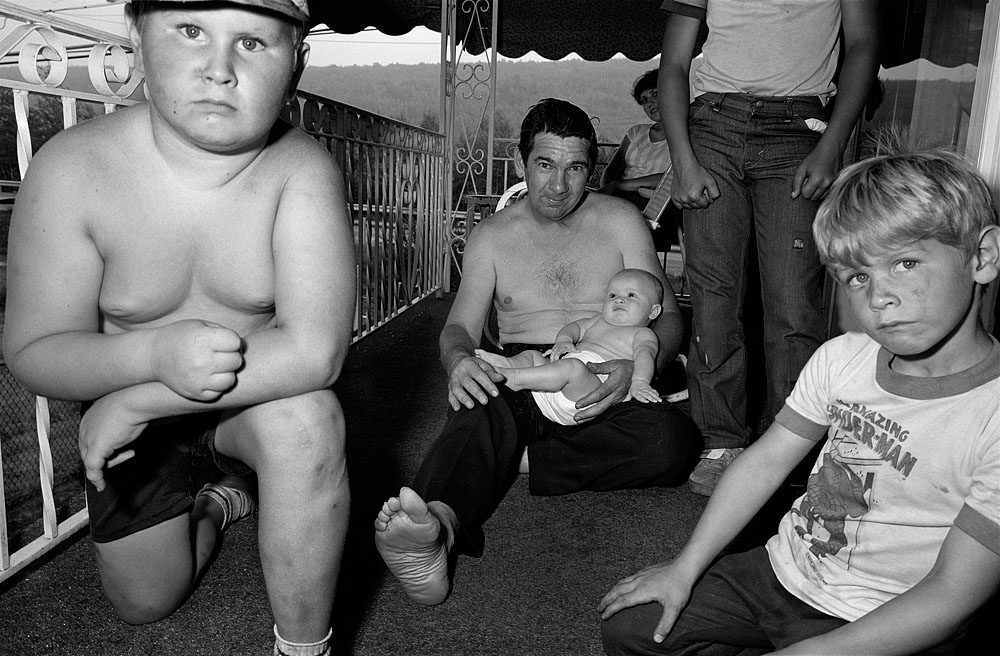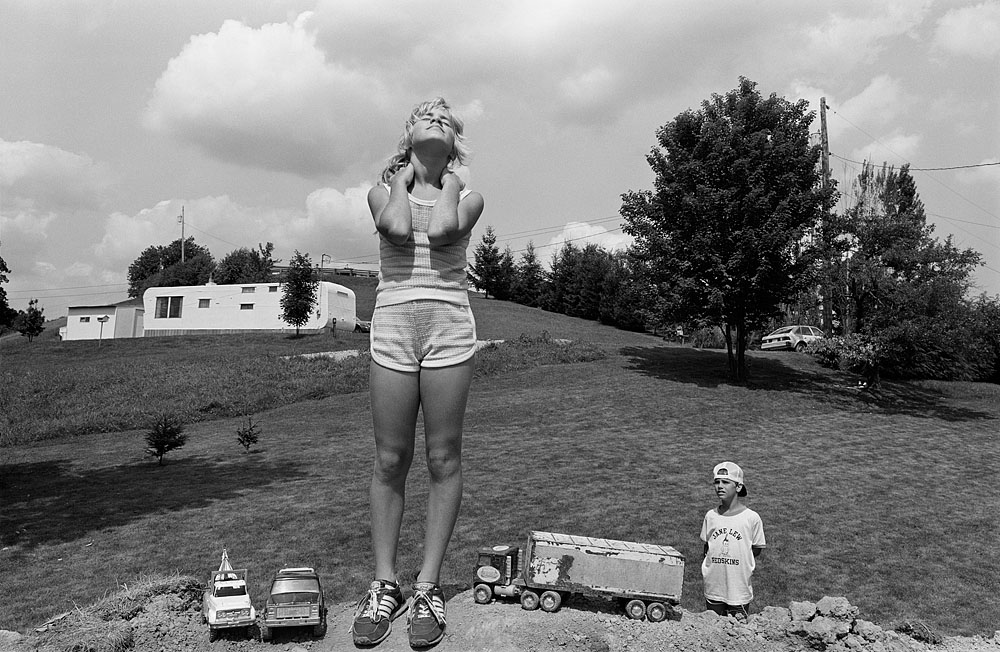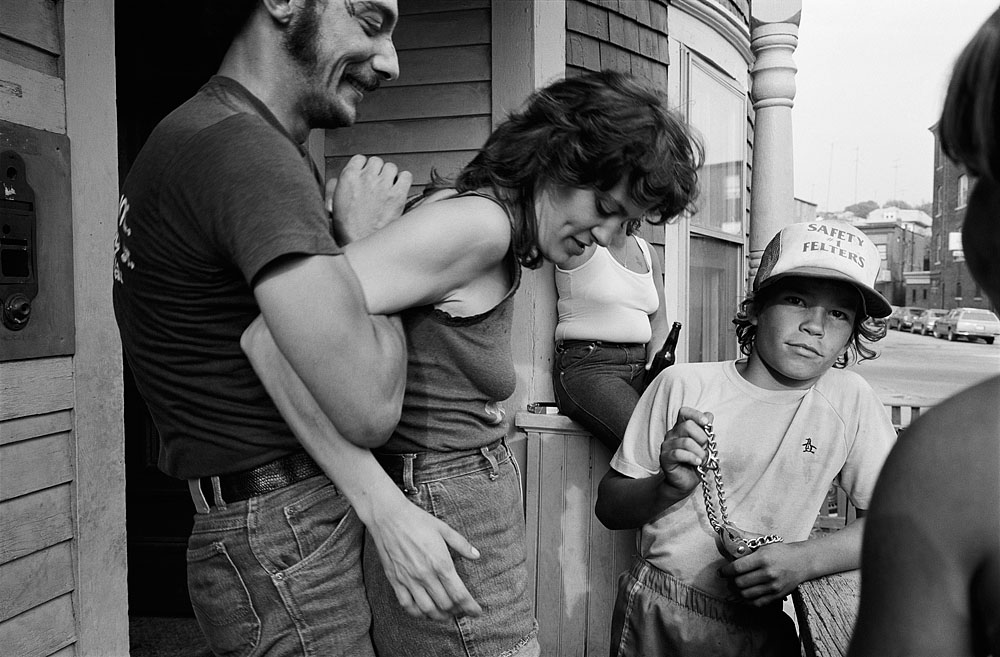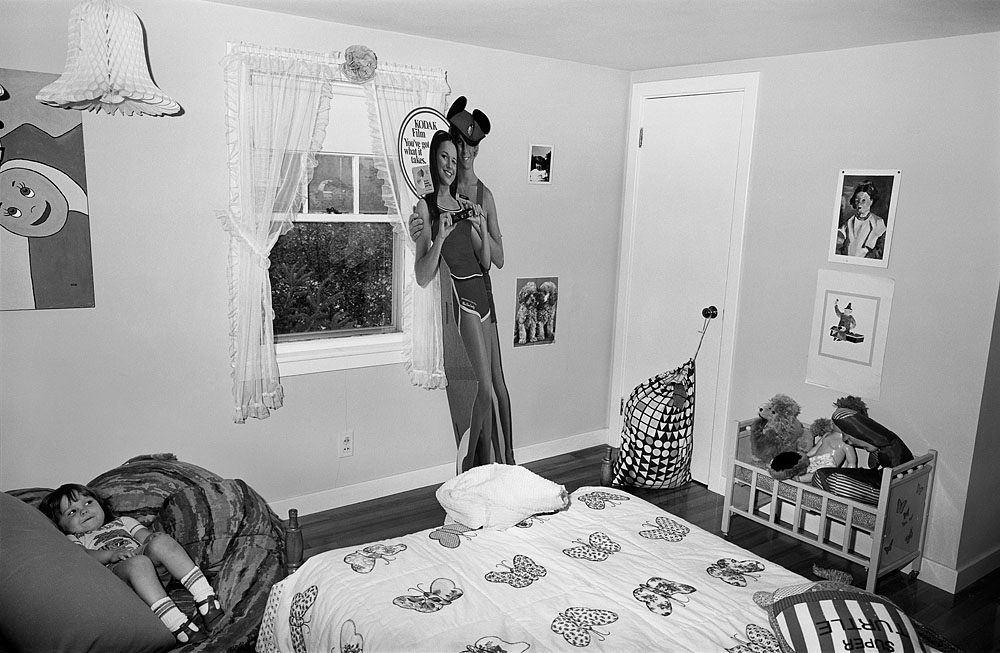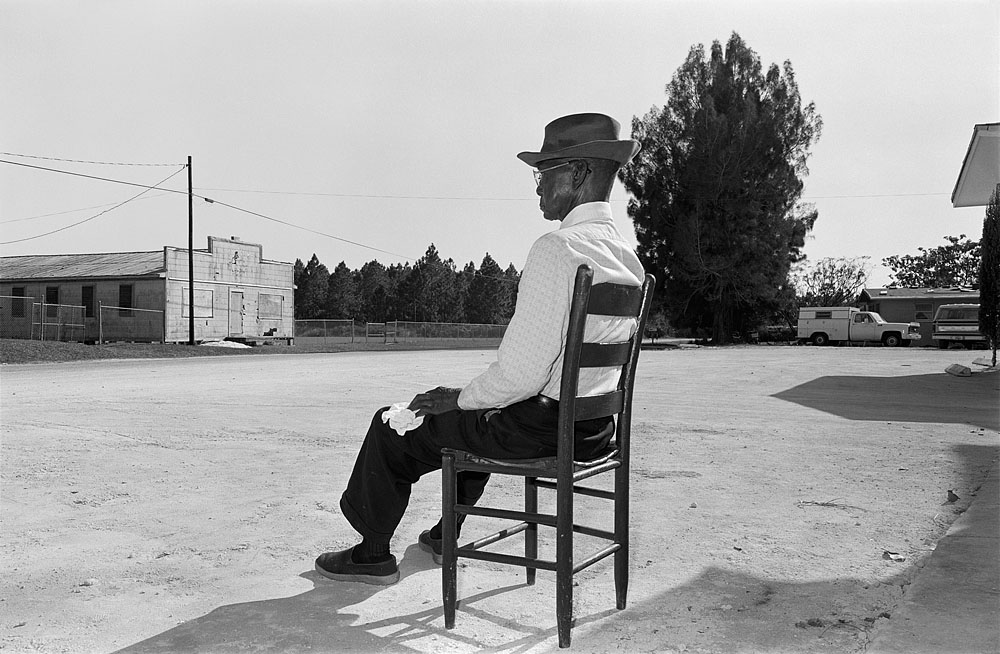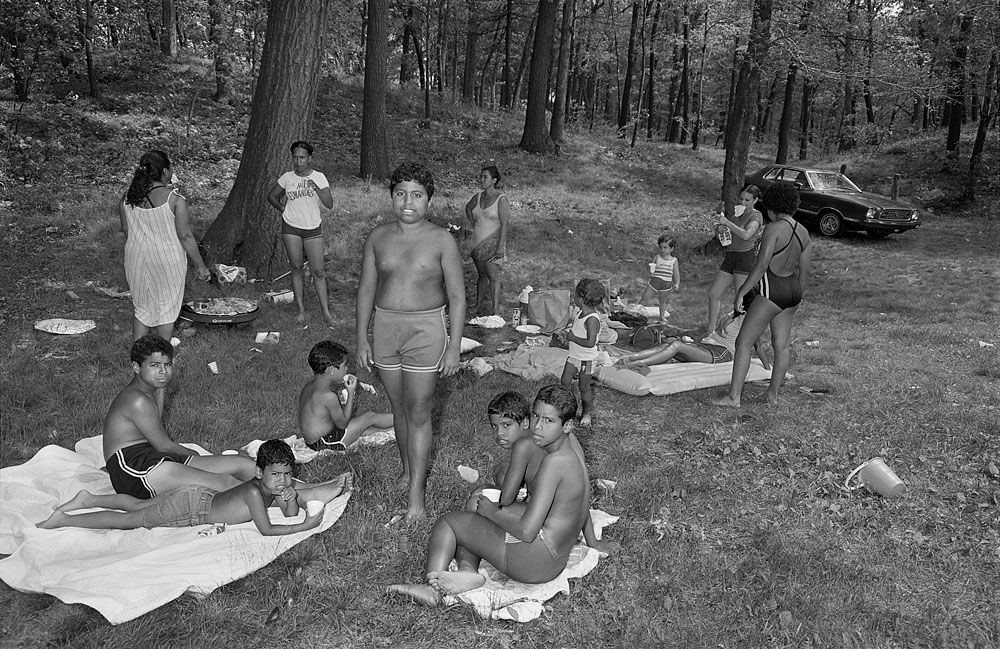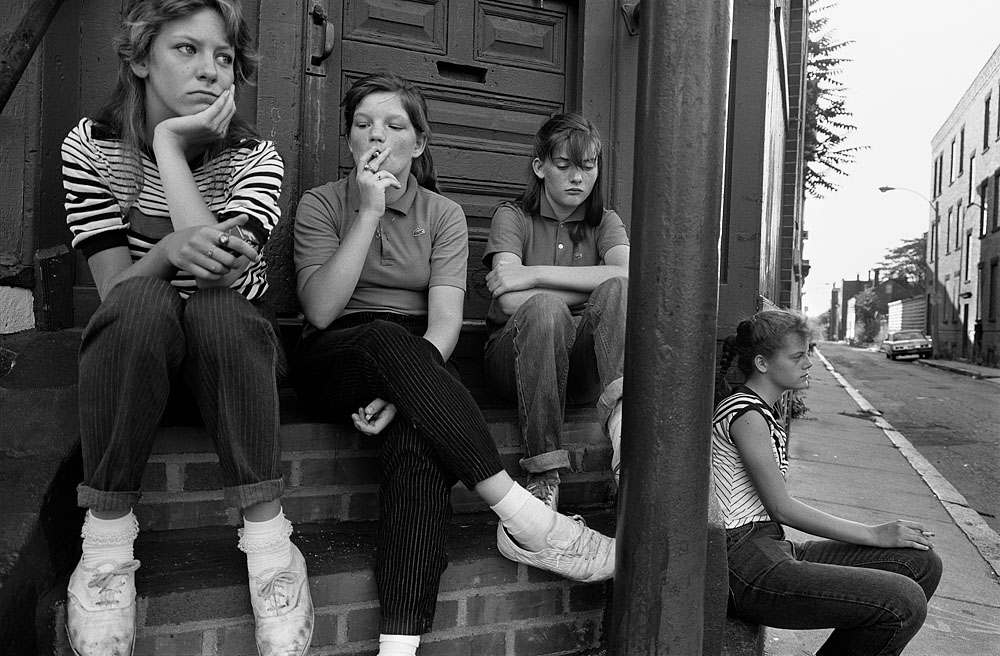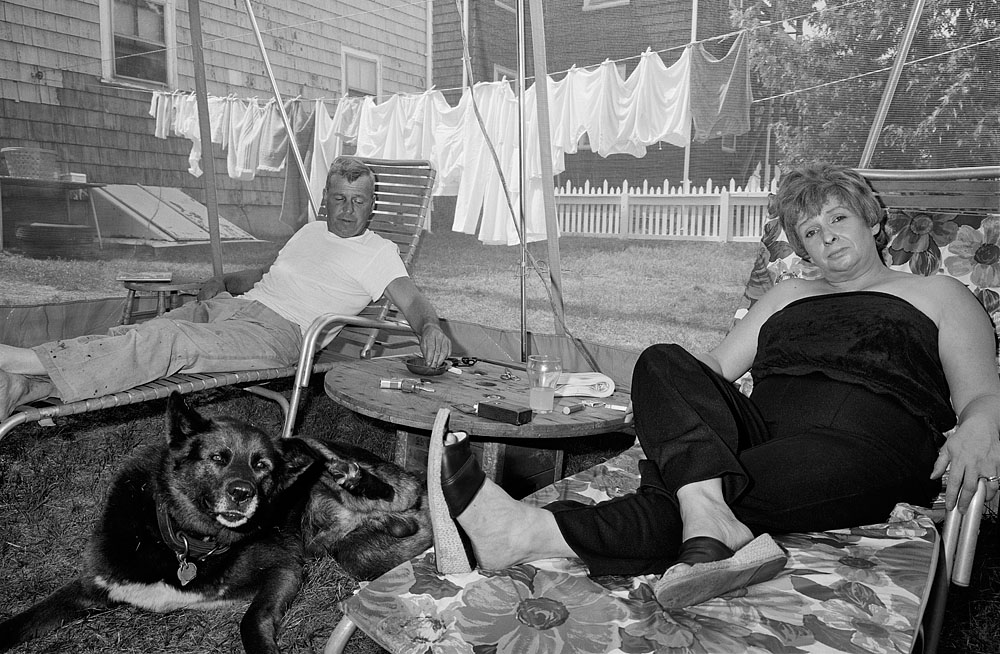Sage Sohier: Americans Seen
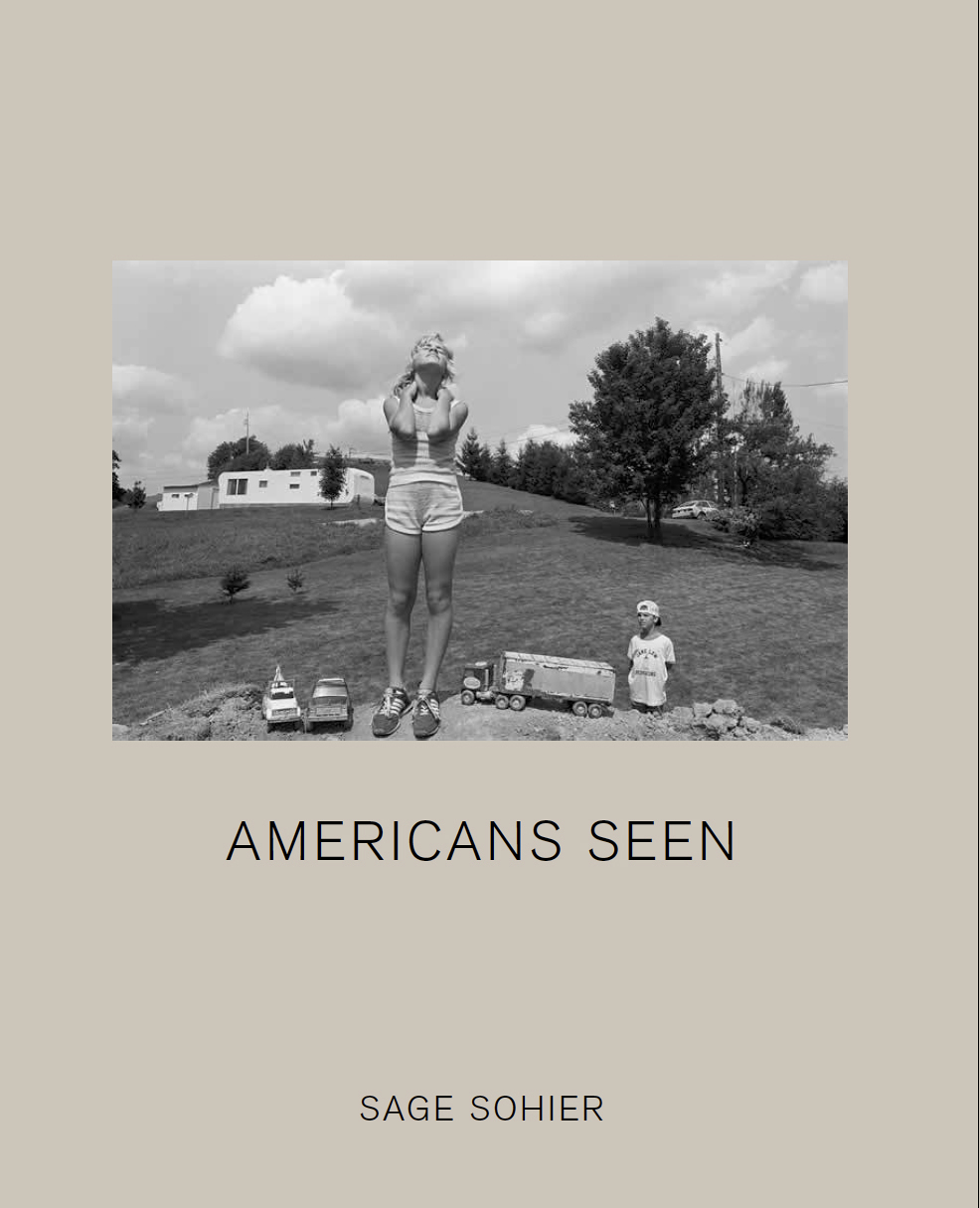 When I first came across Sage Sohier’s photographs, it was a little bit like Christmas, each project rich with her unique way of seeing the world. For 30 years, Sage has captured people in their environment with a sensitivity and curiosity that allows us into worlds ordinary and extraordinary. Sage has a full plate these days with the release of not one, but two monographs of her various projects. Today we celebrate her newest book, Americans Seen, published by Nazraeli Press as part of their ‘NZ Library’ editions. Americans Seen was captured in the 1980’s as Sage traversed America capturing Americans in their natural habitats. An interview with Sage follows.
When I first came across Sage Sohier’s photographs, it was a little bit like Christmas, each project rich with her unique way of seeing the world. For 30 years, Sage has captured people in their environment with a sensitivity and curiosity that allows us into worlds ordinary and extraordinary. Sage has a full plate these days with the release of not one, but two monographs of her various projects. Today we celebrate her newest book, Americans Seen, published by Nazraeli Press as part of their ‘NZ Library’ editions. Americans Seen was captured in the 1980’s as Sage traversed America capturing Americans in their natural habitats. An interview with Sage follows.
Sage will have an exhibition of Americans Seen at the Joseph Bellows Gallery in early 2017 and will release her fifth monograph, Witness to Beauty, published by Kehrer Verlag, in Europe in late 2016 and the USA early 2017.
After receiving her B.A. from Harvard University, Sage Sohier received fellowships from the No Strings Foundation, the John Simon Guggenheim Memorial Foundation, the National Endowment for the Arts, and the Massachusetts Artists Foundation.
Sohier’s series from the 1980s, Americans Seen, will be published by Nazraeli Press in 2016, as part of their “NZ Library” editions. Witness to Beauty will be published by Kehrer Verlag in Europe late 2016 and USA early 2017. At Home With Themselves: Same-Sex Couples in 1980s America, was published in October 2014 by Spotted Books. Other monographs include About Face, published in December of 2012 by Columbia College Chicago Press, and Perfectible Worlds, published by Photolucida in 2007. Other series include Peaceable Kingdom and Almost Grown.
She has had solo shows at Foley Gallery in New York; Carroll and Sons Gallery in Boston; The Museum of Contemporary Photography in Chicago; and Blue Sky Gallery in Portland, OR. Her work has also been included in group shows at the Museum of Modern Art, NY; the International Center of Photography, the Art Institute of Chicago; and many other venues.
Sohier’s work is in the collections of the Museum of Modern Art, New York; the Museum of Fine Arts, Houston; the San Francisco Museum of Modern Art; the Cleveland Museum of Art; the Nelson-Atkins Museum of Art; the Portland Art Museum; and the Brooklyn Museum; to name a few.
She has taught photography at Harvard University, Wellesley College, and the Massachusetts College of Art. Her editorial work has appeared in The New York Times Magazine, Bloomberg Business Week, TIME, Newsweek, Wired, Audubon, Discover, Entertainment Weekly, and Oprah Magazine, among others.
She is represented by Foley Gallery in New York, Carroll and Sons Gallery in Boston, and Joseph Bellows Gallery in San Diego.
The work we are featuring today was created in the 1980’s–can you tell us where you were in your photography career when you made this project?
I was a young photographer in my 20s and early 30s when I made these pictures––just beginning my career.
What was your initial idea behind Americans Seen?
I was interested in creating a portrait of the contemporary American landscape with people in it. I was obsessed with making the best complex pictures that I could of people hanging out in neighborhoods and in their homes. I was thrilled when I came upon an interesting situation, and I loved the challenge of collaborating with strangers until something compelling emerged from the interaction.
Over the seven years I made these pictures, I was drawn to many different scenarios and tried various approaches. Because I was using a wide-angle lens, I became fascinated with scale and its narrative possibilities in a photograph. I was interested, at different times, in family groups and picnickers, fathers and daughters, teenagers hanging out together and also with their parents. I photographed large French-Canadian families in Berlin, New Hampshire, families whose houses had been flooded in Slidell, Louisiana, and elderly friends of my grandmother on the north shore of Massachusetts.
This project spans cities all across the U.S.; was there a method to your selection of locations?
Many of the pictures were made in and around Boston, where I was living, and in New England. In the winter, I would take a trip south, where I could find and photograph people outside. And in the summer, I would try to take a road trip or two to any place that interested me. If I flew somewhere to attend a friend’s wedding, I would rent a car and try to spend a few extra days driving around making pictures.
How did you gain such intimate access to your subjects?
It usually involved spending enough time with people that they got used to me and stopped being self-conscious. In some of the indoor situations, I was photographing friends or friends of friends and had made an appointment to photograph in advance. In these situations, it was often OK to stay for an hour or more. Photographing strangers outside, I had to work much more quickly and encourage people to get back to whatever they were doing when I first asked if I could photograph them. Though asking permission usually changed the dynamic of the situation, something interesting would often emerge if they allowed me to stay for longer than a picture or two. I think my enthusiasm was a bit contagious.
What are you looking for when you create environmental portraits?
I guess I’m always intrigued by how a person’s environment provides clues to who they are, and I like the added challenge of making a landscape or interior environment almost as integral to the picture as the people.
Why publish this work now? (so glad that you are!)
There was a resurgence of interest in my “vintage” prints and I think also that enough time has passed that the pictures provide a kind of portrait of the era.
When I was a young photographer, it was hard for me to stop photographing for long enough to bring closure to projects. I was always on to the next new project. So, this work was never published as a book back then, and I always regretted not having made that happen. I’m very grateful to Chris Pichler at Nazraeli Press for making it happen now.
Posts on Lenscratch may not be reproduced without the permission of the Lenscratch staff and the photographer.
Recommended
-
Paccarik Orue: El MuquiDecember 9th, 2025
-
Lauri Gaffin: Moving Still: A Cinematic Life Frame-by-FrameDecember 4th, 2025
-
Dani Tranchesi: Ordinary MiraclesNovember 30th, 2025
-
Art of Documentary Photography: Elliot RossOctober 30th, 2025
-
The Art of Documentary Photography: Carol GuzyOctober 29th, 2025

